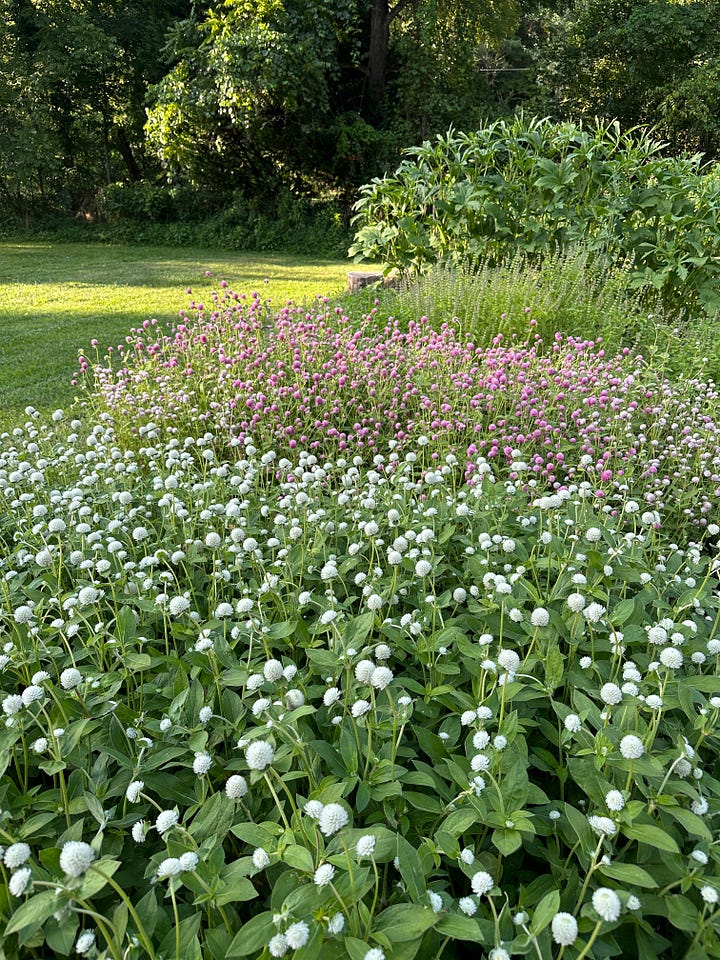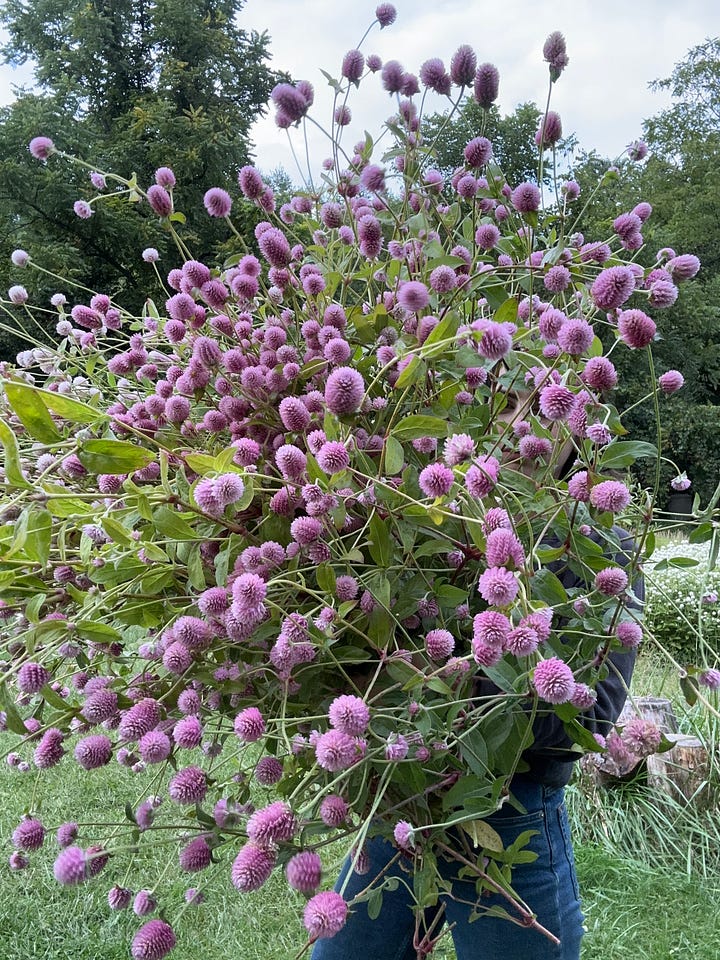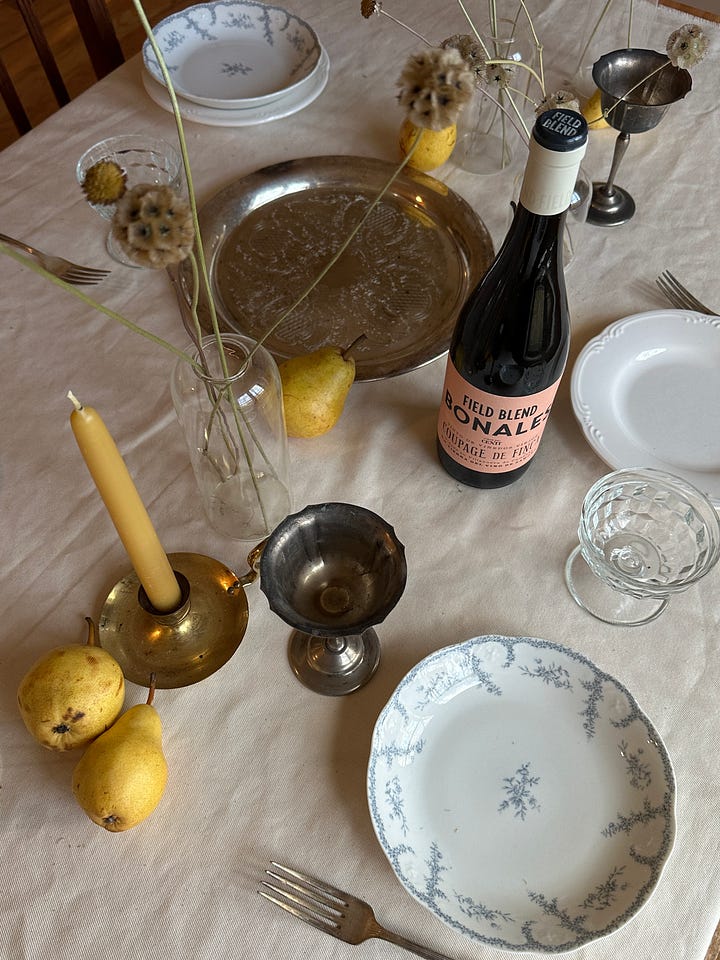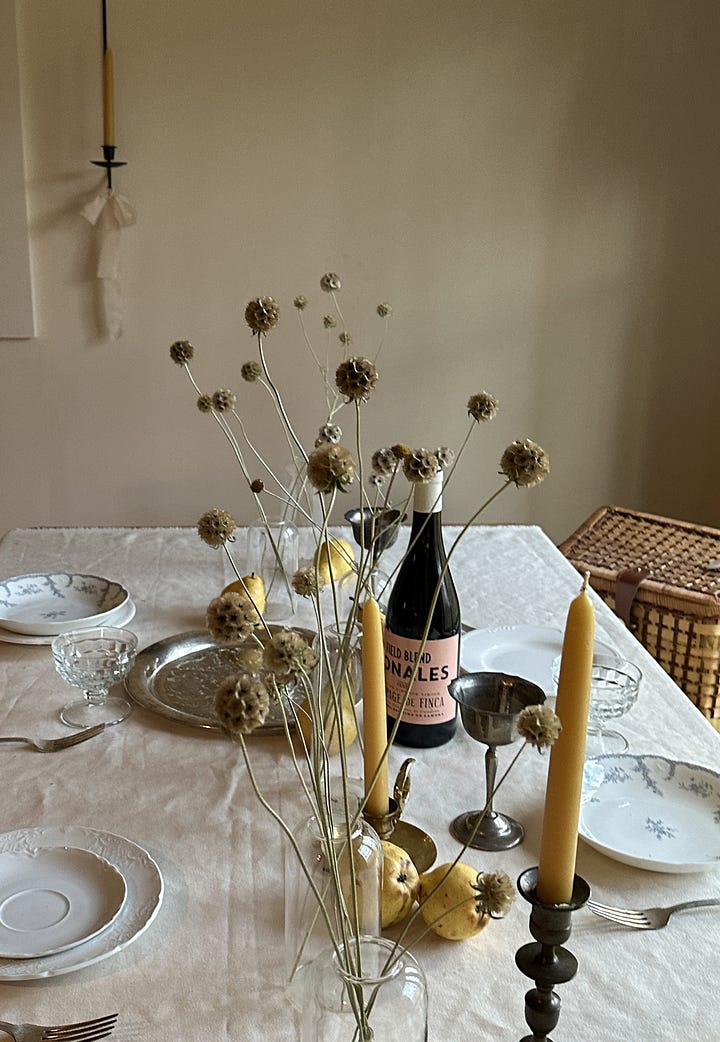Hello there,
You might be reading this because you are a new sign-up to the Field Notes newsletter. I’ve recently received over 500 new subscribers and I’m so happy you’re here!
When I went to categorize my newsletter, I was surprised to find there wasn’t a gardening or agriculture category—no nature category either within this space. It really felt like such an odd oversight, so I shared a quick note about it.
As it turns out, many are looking for ways to connect to other gardeners, foragers, farmers, nature enthusiasts, and kindred spirits. You’re in the right place.
If you’d like to get to know me better, hi! I’m Rowen. I’m a cut flower farmer and florist currently based in Asheville, North Carolina where I am quietly pursuing a naturalist certification alongside managing my own flower truck and building a regenerative flower farm (Zone 7b).
My background in visual arts and my growing work as a naturalist deeply influence both my farming and floral design. In this newsletter, I explore the intersection of this work, which you can expect to see in bi-monthly issues (or monthly during busier seasons).
Here’s what you can expect:
Updates on my flower farm, Tiny Meadow, and seasonal garden tasks
Small rituals to connect with nature and the changing seasons
Practical tips for your own garden, creative ways to work with plants
Field notes - observations, sketches, or insights into the plants and landscapes I’m working with
A little bit of everything else: personal reflections, experiments, and honest moments as I figure things out along the way
Part of this experiment is that it’s unfolding. I allow myself space for it to be evolving—more like an ongoing conversation than a strict structure.
My hope is that this space brings you a sense of calm and curiosity.
December 1, 2024
Letter Eleven: Slowing
Dear Reader,
The last week of November brought about storms that rapidly removed most of the last leaves from the trees in the grove that surrounds me. The frost seems to linger longer each day—the low sun extending the morning golden hour - a soft pale golden light that pours into indoor spaces now that all the branches are bare. The landscape continues to fade to a dull brown, and evergreens shine. Dark Eyed Juncos make their appearance among the patchwork of moss and lichen on the forest floor. Late Autumn is transitioning into early winter.
In the Garden:
With temperatures dipping into the teens this week (quite cold for us here in mild zone 7b), I’ve been busy covering the hardy annuals and mulching the perennials—keeping everything protected as the cold sets in.
When I originally decided I wanted to try covering some of my hardy annuals I went the easy route, buying PVC pipes and frost cloth to cover the beds. I farm off-site, and I wasn’t feeling confident about the sturdiness of the PVC method.
But then, I came across a blog about using galvanized cattle panels as plant supports that double as winter protection and decided to try it.
Putting these together was extremely satisfying. Come spring, I’ll lift up the frost cloth and keep the panels in place and they will be able to act as plant supports instead of the usual plastic netting I’ve used in the past. Livestock panels are great in gardens - both big and small and can be cut to any length with a bolt cutter. I’ll be using it again as a trellis for my sweet peas, and I’ve seen them used as arches to support crops like squash and gourds as well.
Other Tasks, December Garden To-Do’s
I’ve added compost to the beds, letting it break down and feed the soil over winter.
It’s also a good time to sketch out next year’s plans, order seeds, and label anything you might lose track of in the quiet months.
Cleaning tools, fixing trellises, and organizing the barn feels like putting the garden to bed for the season.
Taking cuttings or trying some winter sowing in milk jugs is a good way to keep things moving.
I like to leave seed heads for the birds and set up feeders—it’s a small way to keep the garden alive in winter.
And of course, there’s room for reflection—what worked, what didn’t—and a chance to make something beautiful with dried flowers or whatever’s still lingering.
Flower feature: Dried Flowers
When I’m creating my garden plan, I always include varieties specifically for drying. There is something deeply satisfying about the practice of preserving flowers -a paying attention, an extending of their presence. Drying flowers has become an anchoring practice for me in the cold months. Here are a few of my favorite flowers for drying:
Strawflower: Probably one of the most colorful and versatile flowers you can grow for drying. Harvest them when they are budded up and as they dry, they will open up and reveal a sunny center.
Scabiosa ‘starflower’ - Also called ‘Paper Moon Flower’ - I love these for their pale, blue delicate flowers that give way to beige, papery globe seed heads that are perfect for drying.
Gomphrena (Globe Amaranth) - These were one of the most prolific flowers I grew this season. They can be used in fresh arrangements to add texture, and keep their color when dried.


Other favorites include Larkspur, Hydrangeas, and Celosia.
Drying flowers can be simple. I use the traditional hanging method for preserving my flowers.
How to— Drying Flowers, Traditional Hanging Method:
Strip the leaves from stems
Tie flowers in small bundles using twine
Hang upside down in a cool, dark, well-ventilated place (hanging them upside down ensures they dry straight, keeping them ventilated keeps out mold)
It’s a good idea to keep them out of direct sunlight which can fade color.
When it comes to drying flowers, you don’t have to follow the rules - though a good rule of thumb is the higher the water content of the flower, the harder to preserve. Nevertheless, try any kind of flower you like and see what happens. I’ve been wanting to grow Sanguisorba for a while to dry and I may try to squeeze it in next season.
Dried flowers can be used in wreaths, everlasting arrangements, or for decorating a tablescape:


With all the downtime winter brings, I am taking the time to reorganize the indoor spaces that have become cluttered during the busy season, process and store all the dried flowers, save and store seeds, and I’ll be foraging evergreen foliage for some midwinter magic.
We are drawing closer to the depths of winter, it’s a time of slowing - the garden is being put to bed. The hardy annuals, perennials, and spring bulbs have put their roots down in the fall and prepare to go dormant over winter. May we remember that it is a time for us to slow down and invite rest too.
Love,
Rowen
Bergs Pots & Saucers - I got a few of these for some paperwhite bulbs I’ll be planting this week.
This beloved podcast episode on the Inner Landscape of Beauty by John O Donohue of which I’ve listened to several times, originally shared by Lisa Olivera.
A good novel for winter reading with a strong sense of place/nature: North Woods.
Two films I’ve watched and loved - After Life by Hirokazu Kore-eda, and Picnic at Hanging Rock by Peter Weir.












Very lovely--I'm still struggling with the ending of the garden season, so this is much needed right now--so smart to grow flowers to dry that you can have around in the cold months. I've been pressing flowers, but it's not the same as a nice something in a vase.
Definitely going to listen to the podcast episode you linked. Thank you! And thanks also for the substack recommendation. :)
I love this whole article! Thank you for sharing all of these lovely tips!